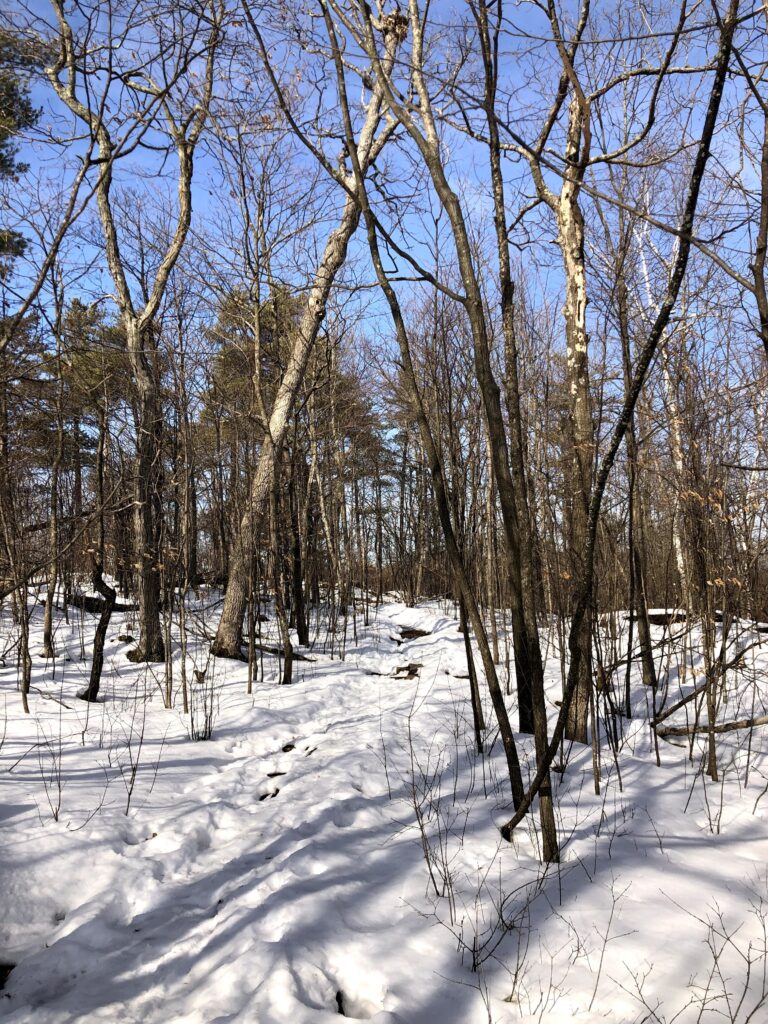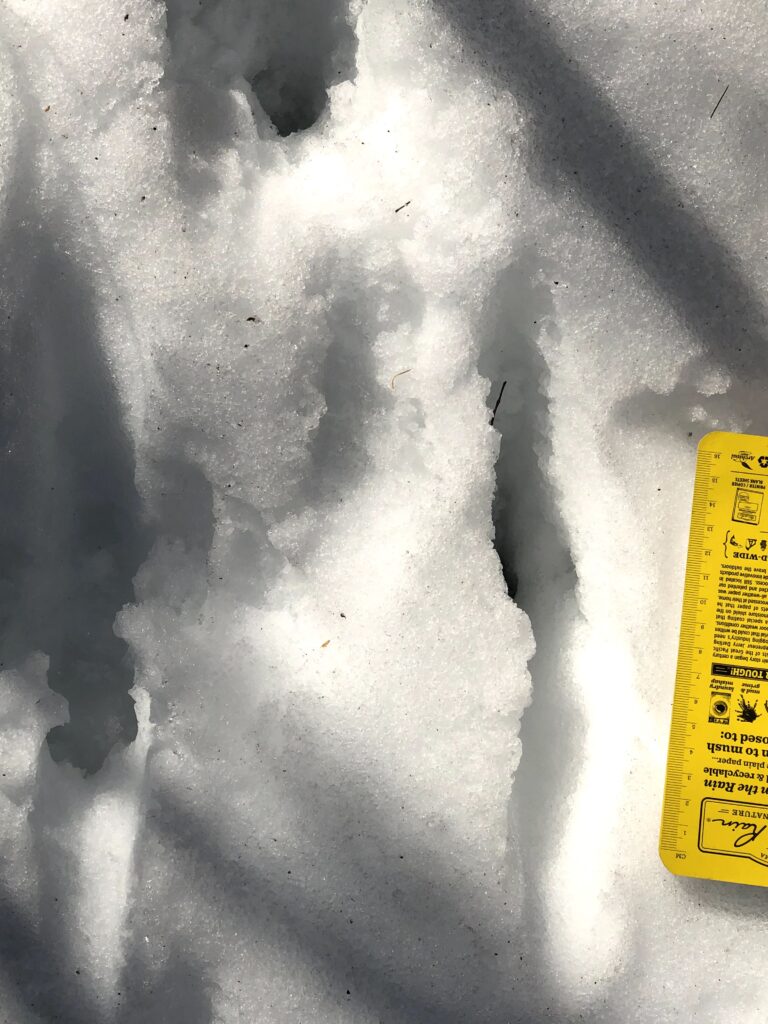During my February visit at Wiggly Wood, I was able to identify Cottontail Rabbit tracks. Cottontail rabbits’ ideal place to live are in open fields with shrubs to take cover in, but are adaptable depending on the situation (Vermont Wildlife and Fisheries). This is the exact description when you first enter, Ethan Allen Park (greater Wiggly Wood area). This cottontail rabbit moved into the woods as winter proceeded because it needed a larger array of shrubs in the understory. This larger selection allows for more bud/stem options to feed on as well as more understory choices on where to live, as they tend to barry either day or night. By retracing the cottontail rabbits steps, I noticed that it came from a bush that had lots of buds chewed on. These steps went from this point, crossed over Wigglywood and went downhill crushing branches along the way. It’s my belief that the rabbit went from it’s safe space, on a search for food, and the tracks I saw were the rabbit heading back to this safety.
The only major phenological change that I noticed is that there are less overall leaves. The leaf litter that was once on top of the snow has now compacted by more snowfall over the course of February. February also took a toll in terms of the few leaves remaining on the trees, as winds blew the last few away, making nearly all the trees completely naked. This doesn’t surprise me much as February was a continuation of the consistent cold and snow that January brought, not allowing most of the ecology to flourish.
I would be interested if I would have found more if I would have gone a week or even a few days earlier. It was 50 degrees outside, leading lots of snow to melt. This made it hard to view tracks as many were half melted and extremely deformed. At one point, I found what I believe to be a subnivean zone, but the top portion melted caving into the zone itself, so I’m hesitant to attach it to my findings.
Eastern Cottontail. (n.d.). Retrieved February 24, 2020, from https://vtfishandwildlife.com/learn-more/vermont-critters/mammals/eastern-cottontail
Levine, L., & Mitchell, M. (2014). Mammal tracks and scat: life-size tracking guide. East Dummerston, VT: Heartwood Press.

